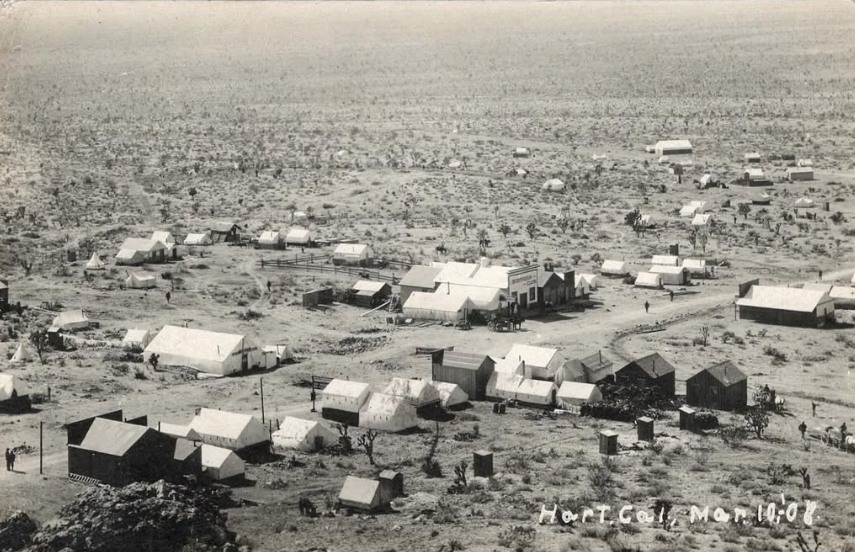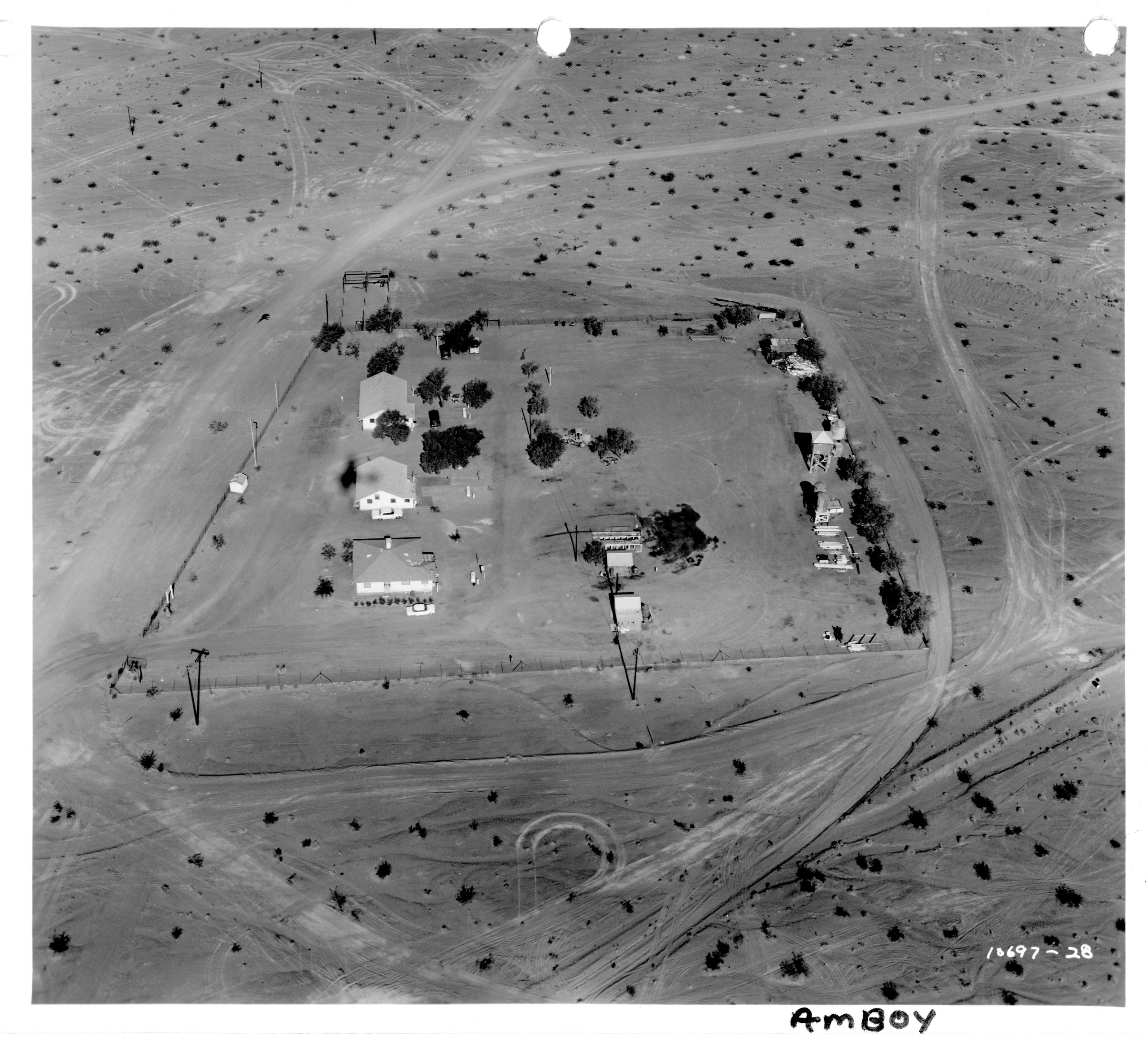During the Panic of 1907, a financial crash that began with a severe drop on the New York Stock Exchange, James Hart and the brothers Bert and Clark Hitt, discovered pockets of rich gold ore in rhyolite on a steep slope in the Castle Mountains, approximately 4 miles south of the 23-miles long Barnwell & Searchlight Railroad. Their strikes became the Oro Belle Mine.
The Barnwell & Searchlight railway was built as an extension of the Santa Fe‘s network in the Mojave Desert, which included the California Eastern Railway that reached Barnwell, formerly Manvel.

USGS – USGS Ivanpah quad 1911 map, Common Domain.
James Hart must’ve won the game of Rock, Paper, Scissors because the town bore his name. The strike was touted as the “Second Goldfield bonanza.”

The San Bernardino County Sun, Jan 17, 1908, Page 1
Actually, according to Abandoned Settlements of the Eastern Mojave, George A. Foster, a young broker from Goldfield, acquired several claims above the Oro Belle Mine. He named the trio the Big Chief. M.L. Cook was hired by Foster as a surveyor. Cook named the townsite below the mines after James Hart.
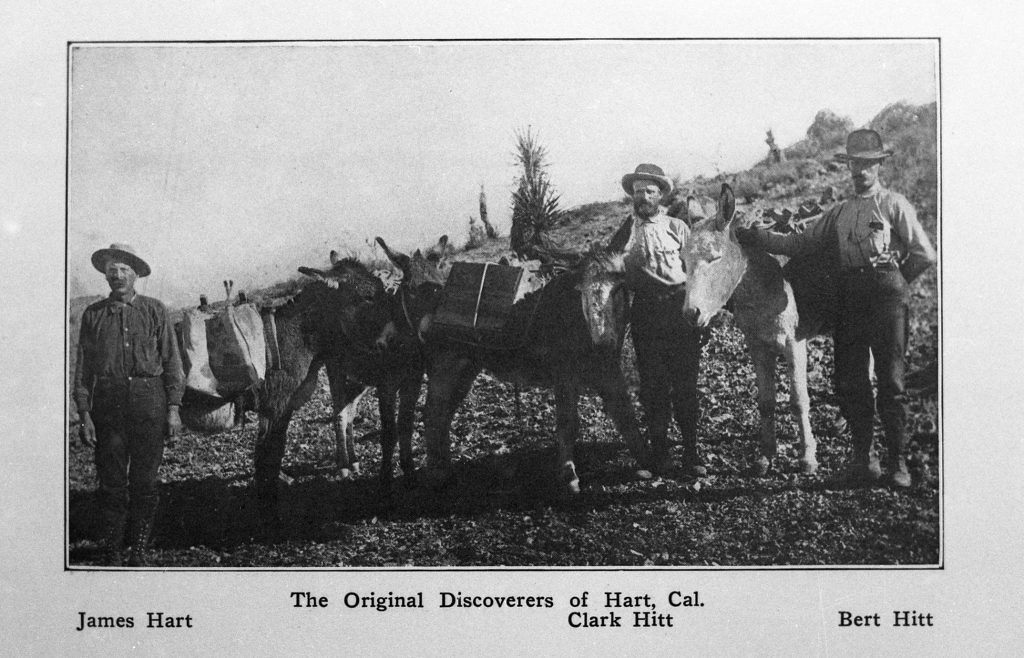
In January 1908, eager prospectors from Needles and Searchlight stampeded to the strike on Ford Model T’s, buggies, bicycles and burros, ready to strike it rich. Tents sprang up overnight. Burros hauled water to Hart for $8 dollars a barrel.
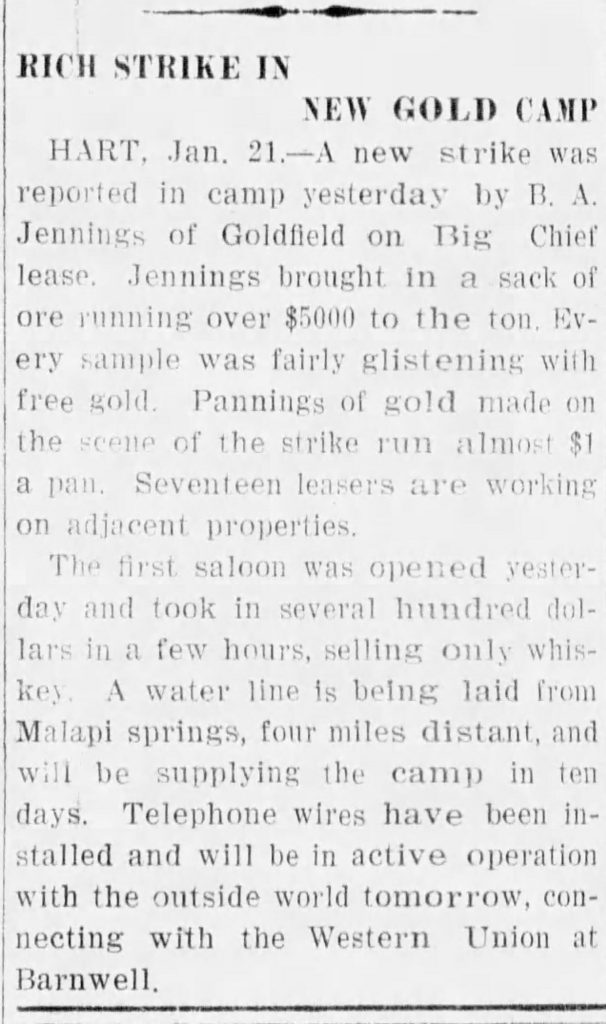
Santa Rosa Republican, Jan 21, 1908, Page 1
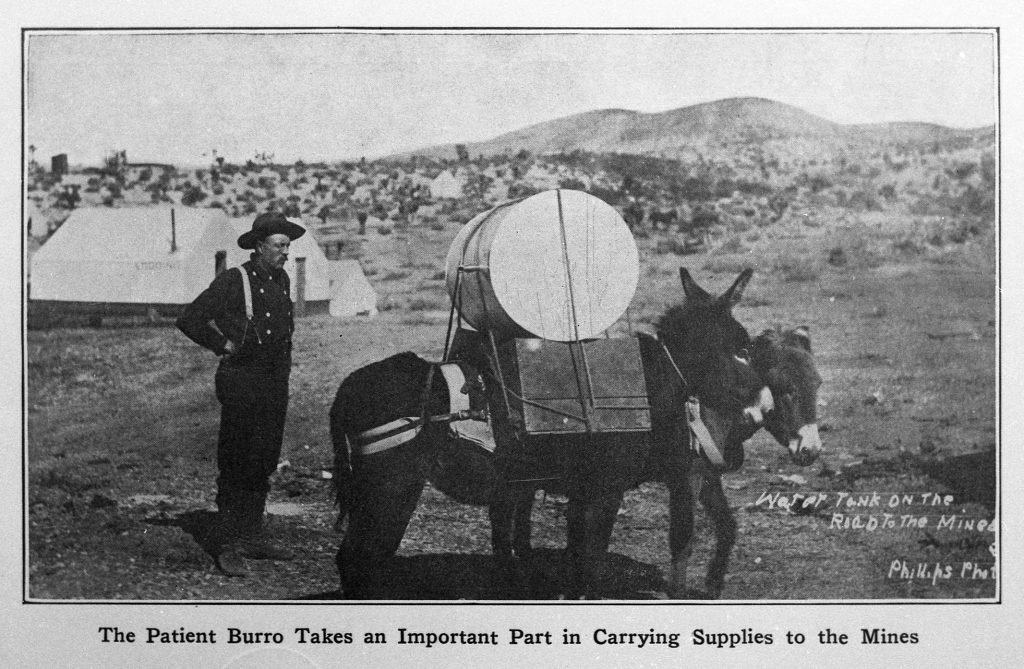
During the next few months, 700 people arrived and progress in all its varied forms followed. By the Spring of 1908, Hart was a bustling mining camp. Its population doubled and then some.

The San Bernardino County, Jan 29 1908, Page 1
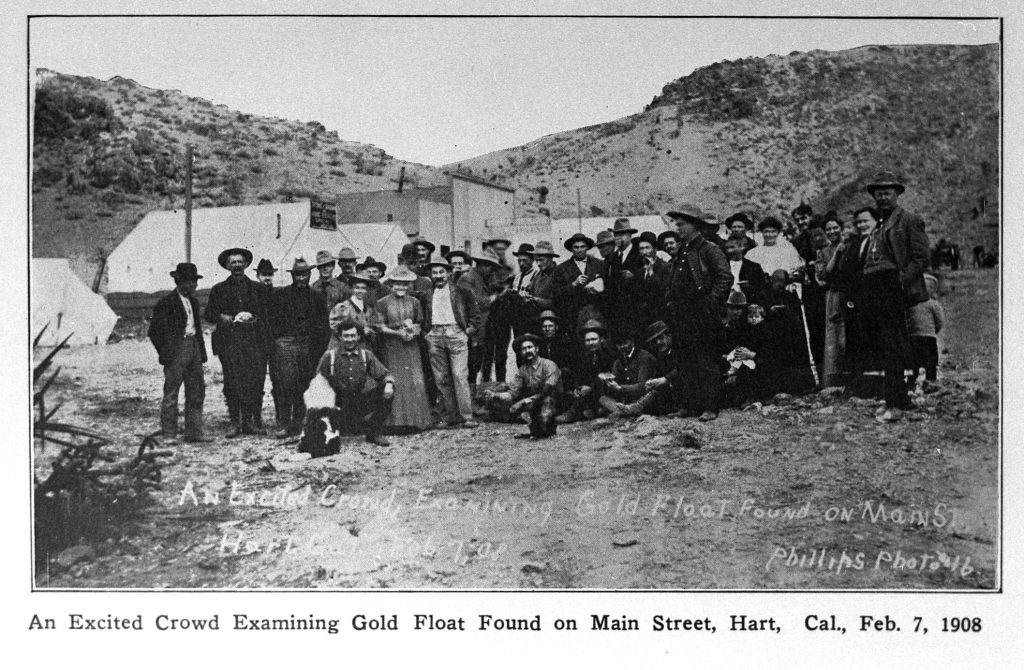
The Hitt brothers were not overlooked. The Santa Fe established an agency called Hitt six miles east of Barnwell, consisting of two boxcars on a siding. R.J. Young served as the station agent.
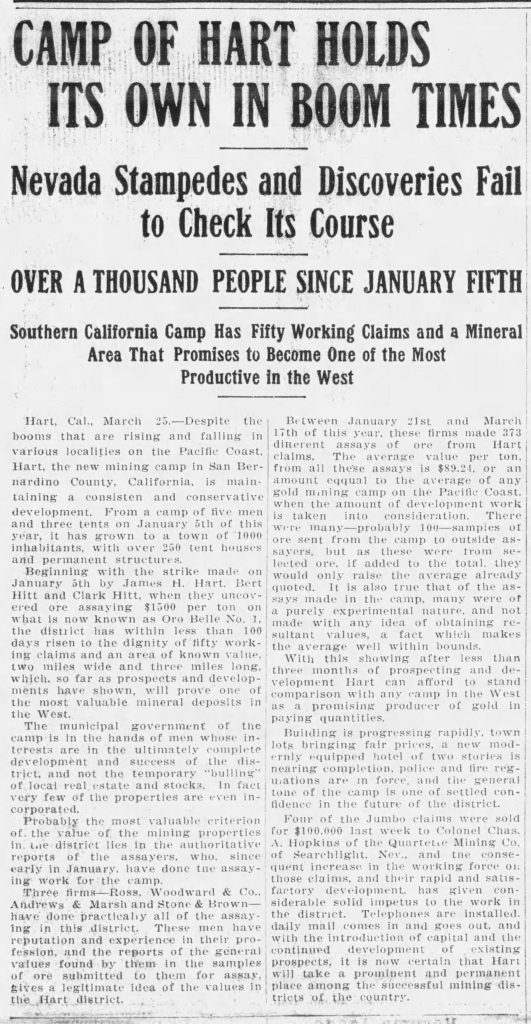
San Francisco Bulletin Mon, Mar 30, 1908 ·Page 1
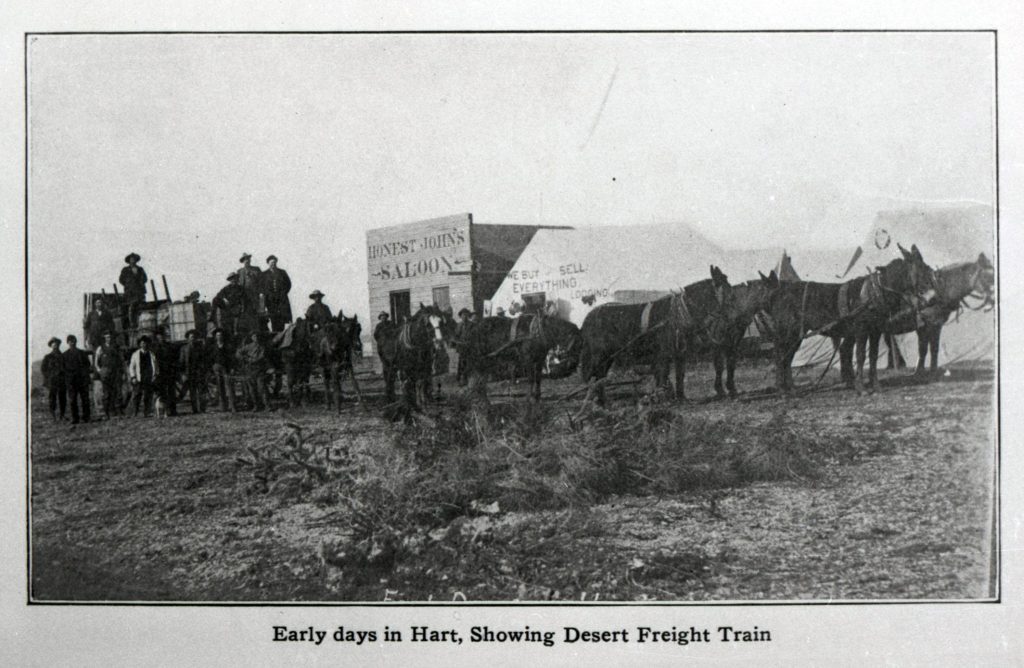
A three and a half mile stage ran from Hitt to Hart. The first stageline was created by George Otterson, who charged a one dollar fare.
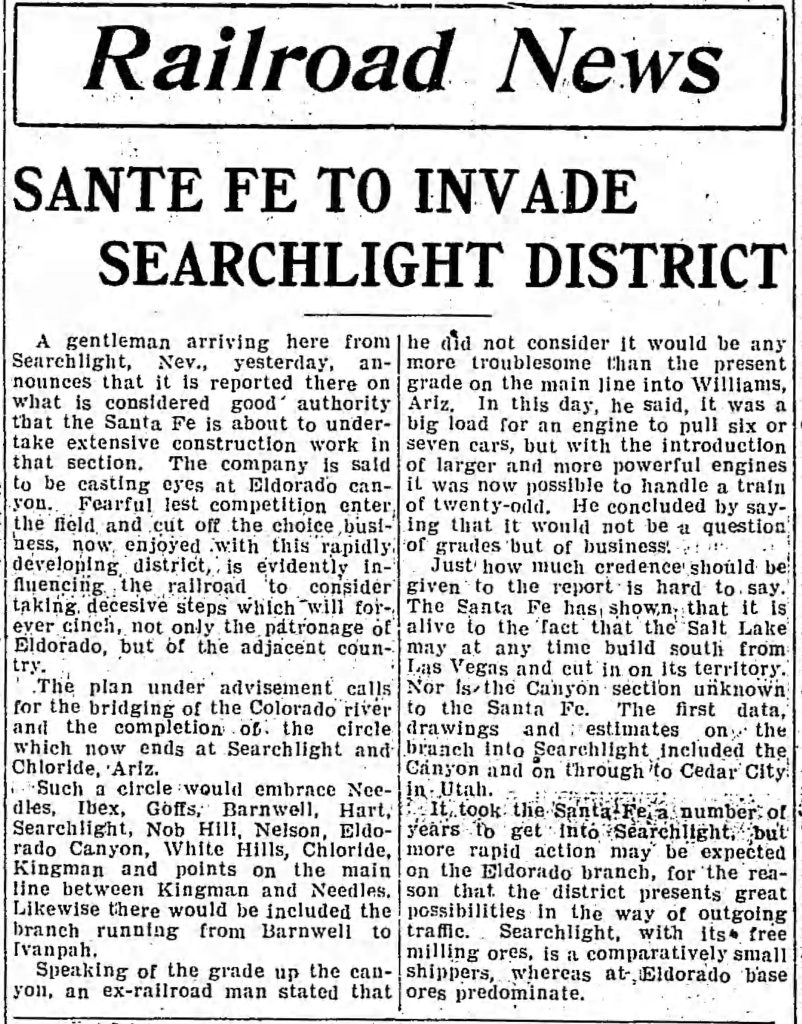
The Evening Index, Dec 26, 1908
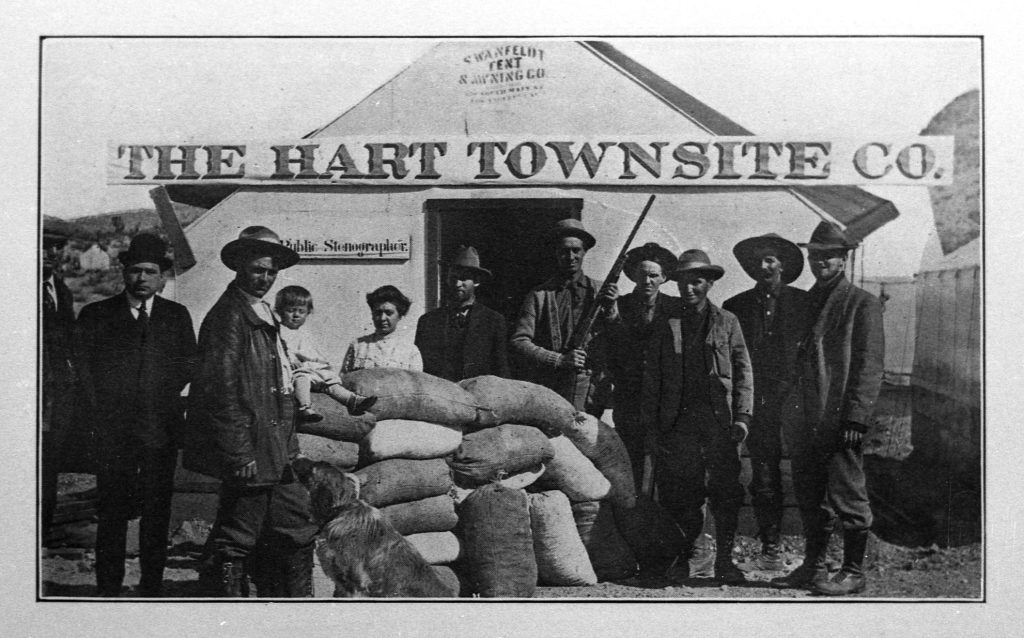
As the saying goes, all good things must come to an end. A league of businessmen Kevins formed and limited the sale of booze, enforced police and fire regulations, ousted undersirables like gamblers, rowdies, and six shooter packing toughs. Hart even took the boom-boom out of the boomtown. There goes the neighborhood.
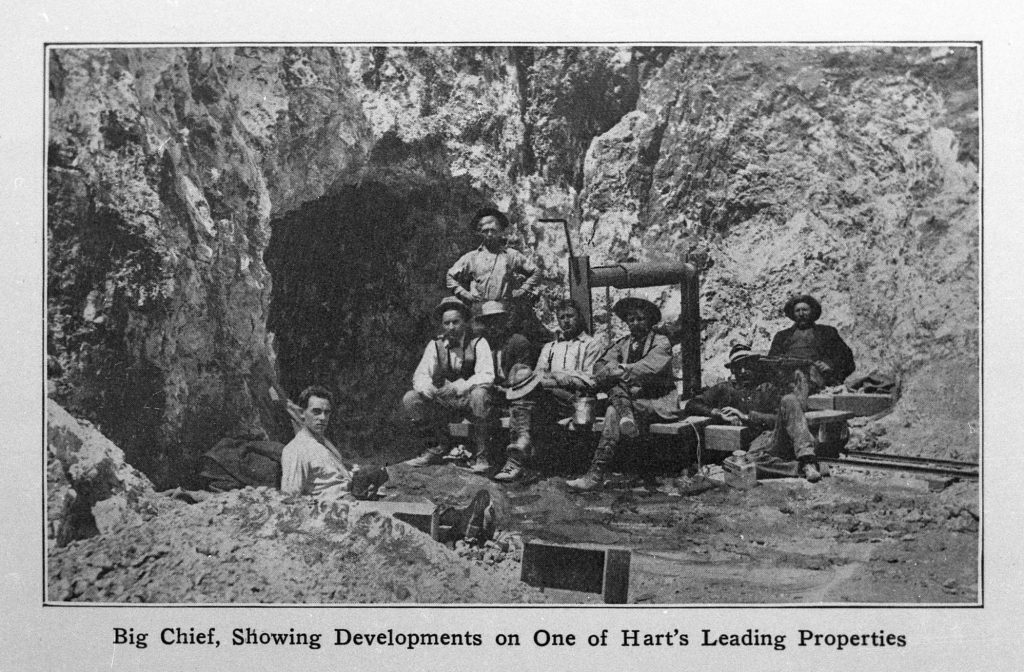
Although seemingly asleep at the wheel during its earliest stages, the county board of supervisors organized the Hart Judicial Township on March 2, 1908 then made up for lost time.
Milton Mundy was appointed justice of the peace. Edward B. Harris became the constable. The following day they established a voting precinct. A township map became official the next month. They called a special election to grant several liquor licenses, making a total of thirteen.
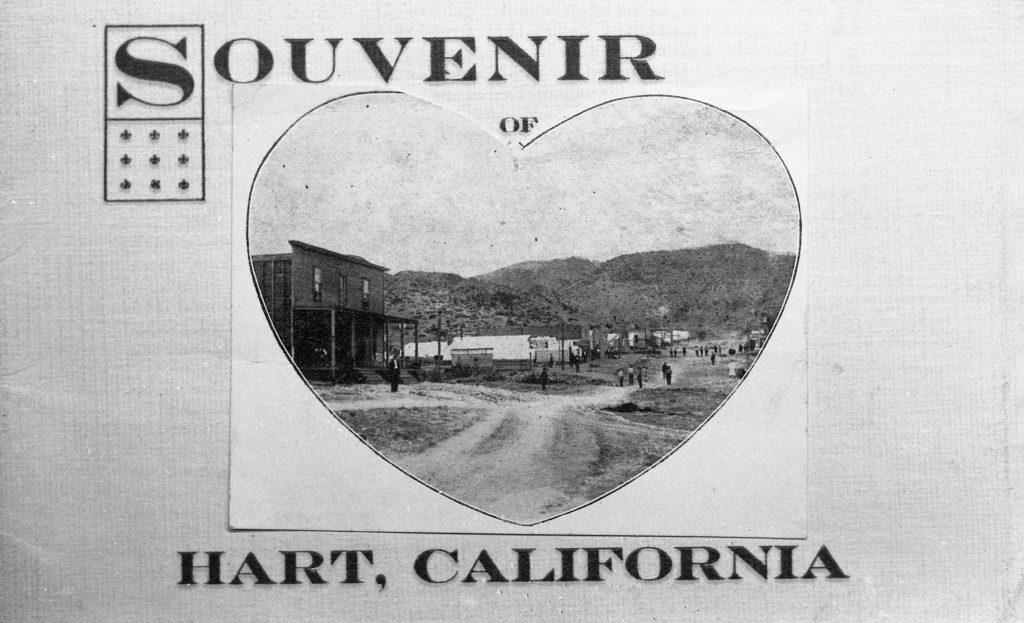
By June the same year, Ed Harris resigned from his role as constable.
Coincidence?
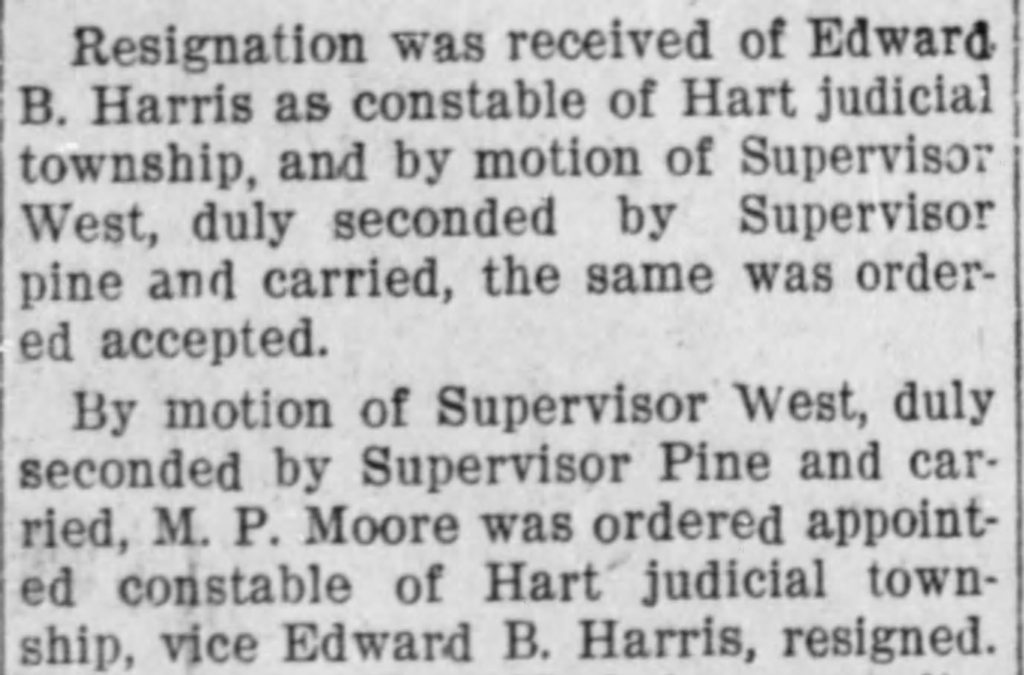
The San Bernardino Sun, June 3, 1908

The Los Angeles Times, March 21, 1909
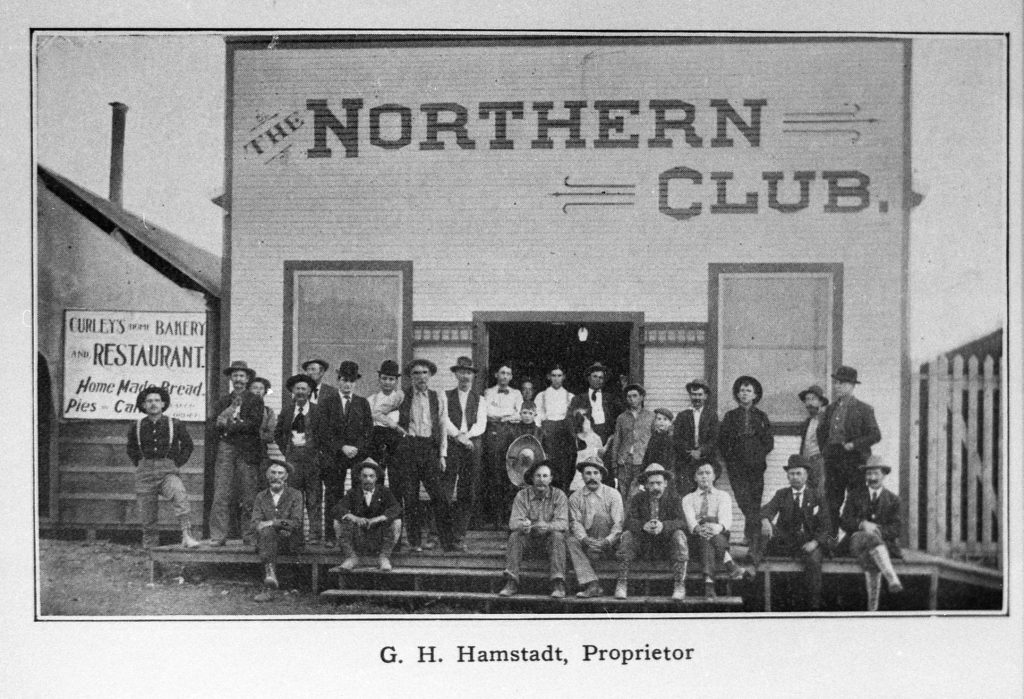
Gus Hamstadt owned the largest and fanciest saloon in Hart, called the Northern Club. It featured gas light lamps, a 20 foot long bar, music boxes that played for a nickel, and requisite ornate paintings displaying voluptuous women of questionable virtue.
Since gambling and paid hook-ups were outlawed, patrons used chips to buy cigars and try their luck with slot machines, which were legal and less deadly than faro.
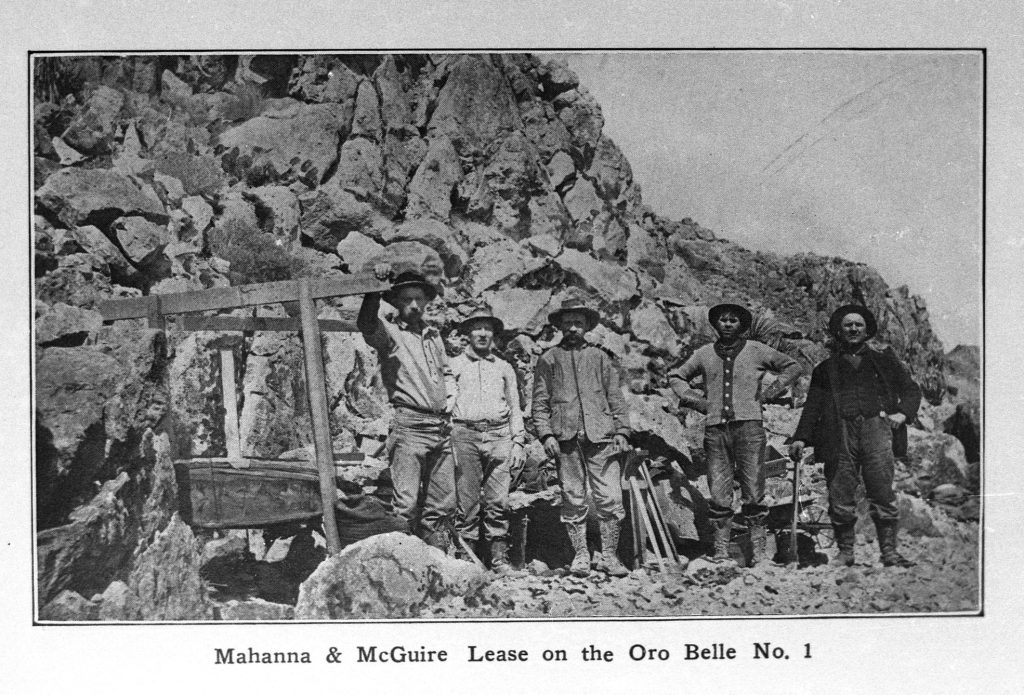
Gold petered out in 1909. By then Hart was a pretty boring place anyway. The only lady of the evening left was a tired part-timer named Pearl who divided her time between Barnwell and Hart, not to be confused with Pearl De Vere, the soiled dove of Cripple Creek, Colorado.
Sad is the tale of when a boomtown goes bust.
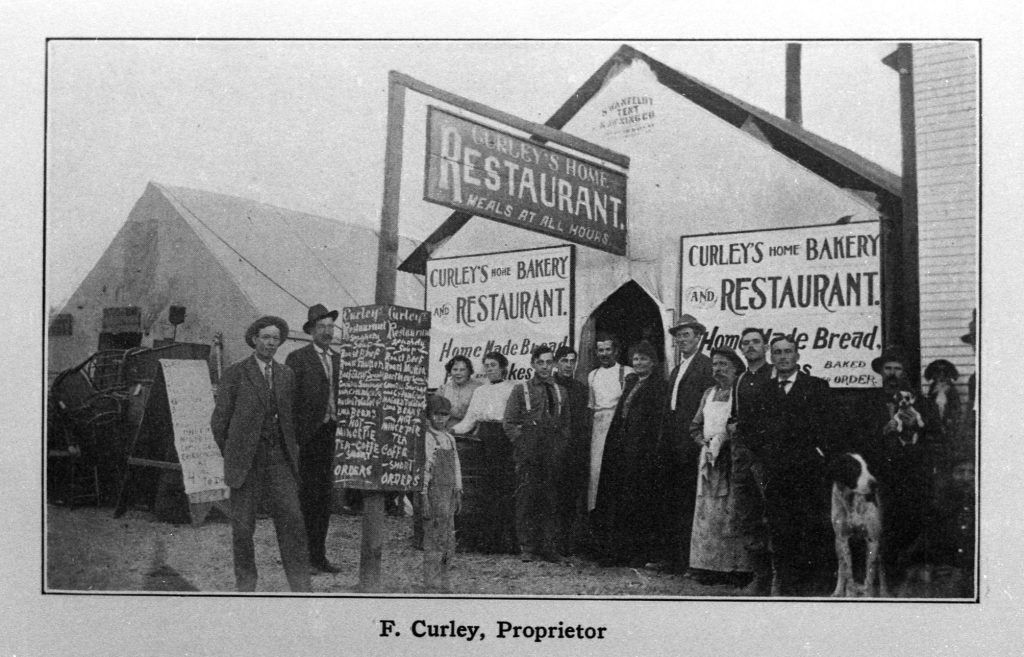
Most businesses closed. A fire wiped out the remaining business district. So much for a volunteer fire department.
Leading mines laid off workers and the union collapsed. Food became scarce. Desperate townsfolk from Barnwell and Hart occassionally rustled a cow from Rock Springs Land & Cattle Company just to survive.
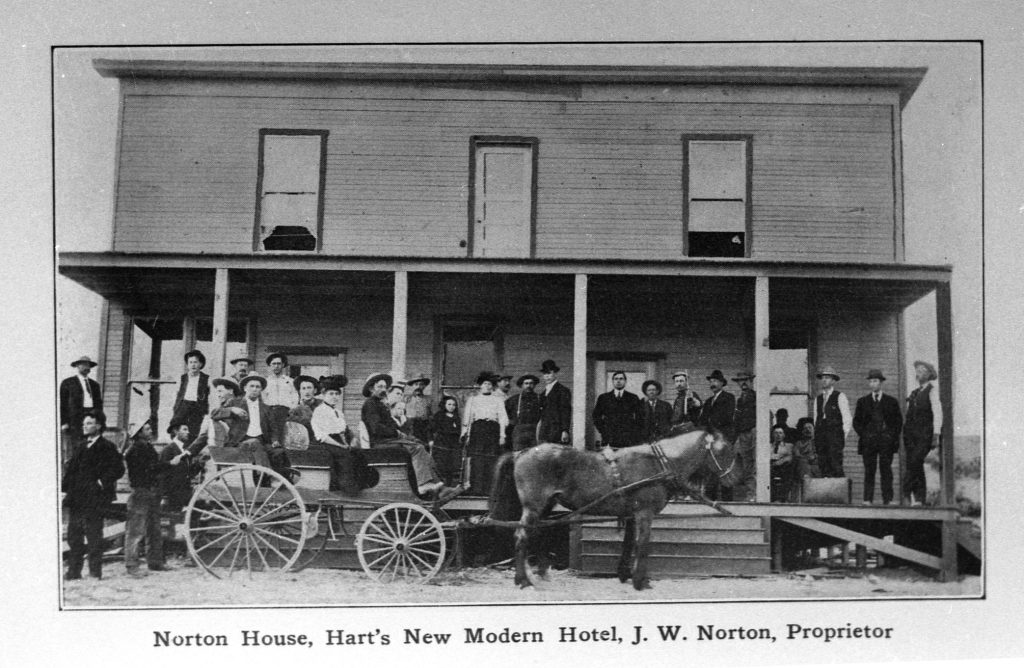
Hart continued to circle the drain. The businessmen’s league disbanded and it’s rumored former members drank the town dry.
The board of supervisors abolished the township in 1914. The final nail in the coffin for Hart occurred when the post office closed in December, 1915 after the town became defunct. Goodbye, my achy, breaky Hart.

Site of Barnwell and Searchlight railroad station in Searchlight, Nevada, by Henchey, Paul L, Sept 10, 1949, courtesy UC Davis Library, Archives and Special Collections
A historical marker was dedicated to Hart in 1984 by Billy Holcomb and Floating Wang Chapters E Clampus Vitus, and Bureau of Land Management-Needles Resouce Area. Marker Number 30 is just North of Route 66 near Goffs, in San Bernardino County, California. It is on Hart Mine Road, 0.4 miles east of Walking Box Ranch Road. A lone chimney is the most prominent remnant of the ghost town of Hart.
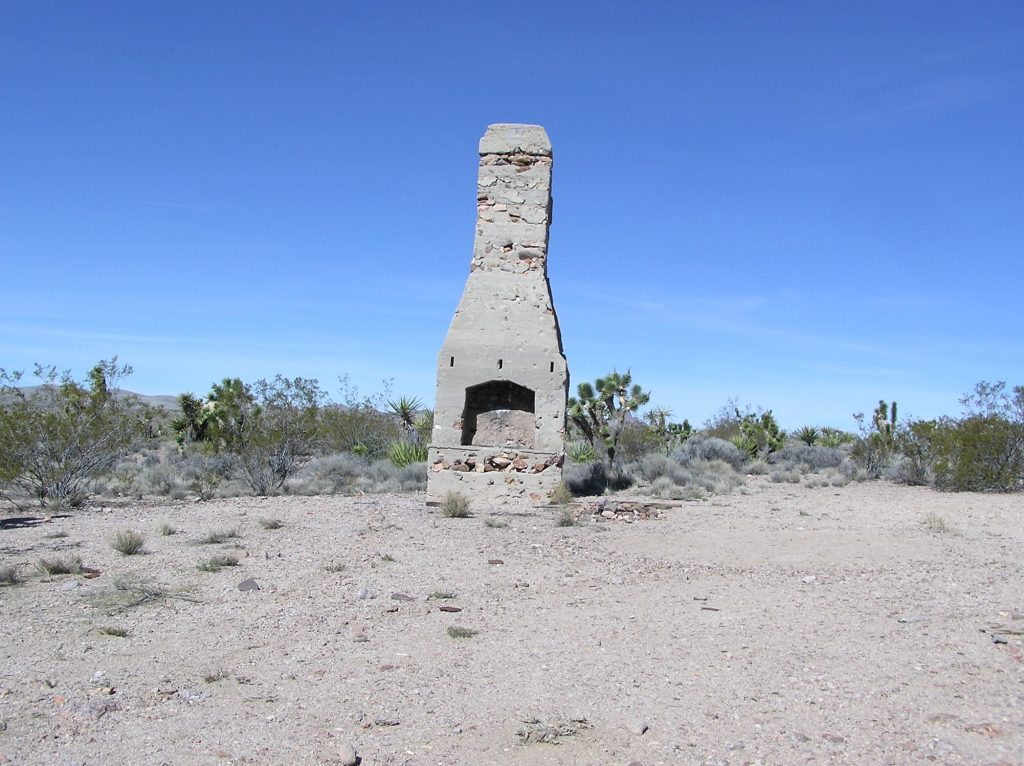
Photo courtesy, Bill Knepper, 2022.
References
Hensher, Alan, Abandoned Settlements of the Eastern Mojave, Western Places Vol 8 No 3, whole number 31, pub 2007, pgs 21-33.
Snorf, Dorothy, Early Days at Hart, Reminiscences of John Sherwood Snorf, Tales of the Mojave Road No 18, pub Oct 1991.
Vredenburgh, L.M et al, Desert Fever, an Overview of Mining in the California Desert, Living West Press, pub 1981.
https://vredenburgh.org/mining_history/index.html
Photo Credits: All vintage photos except where noted are from a Hart Souvenir pamphlet by Laerman and Phillips, 1908. Courtesy Larry Vrendenburgh Collection, 2020.
Last Update: Sept 4, 2025.
